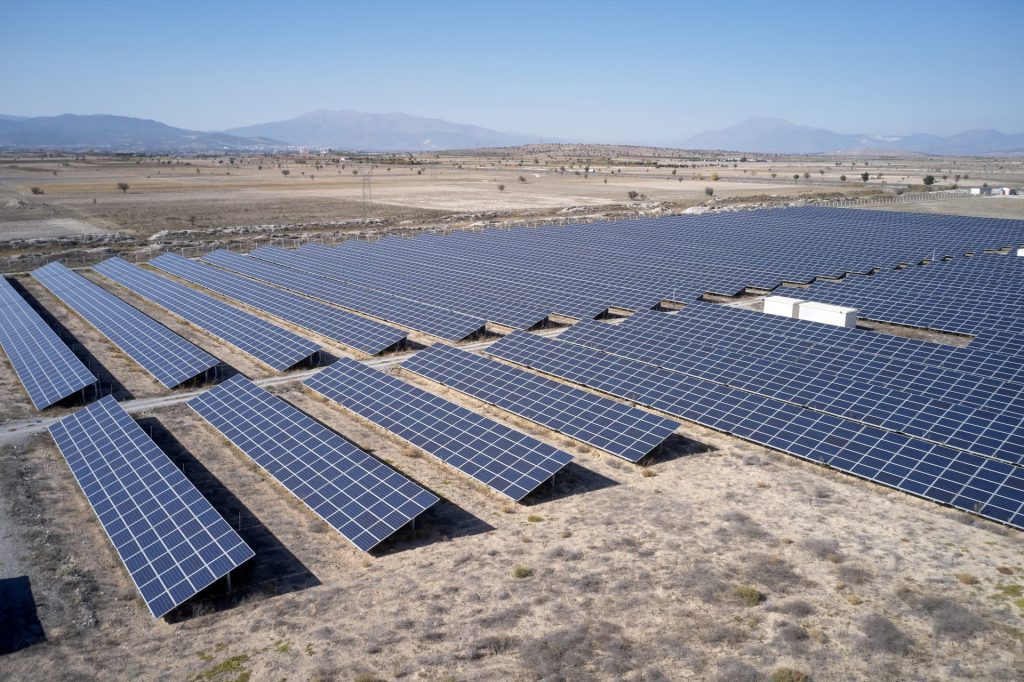[Article 2] Why You Need an Integrated APM to Predict Asset Performance
This is the second article in a four-part series about the unique O&M challenges of the energy storage asset class and the reasons why owners and operators of mixed portfolios of solar, wind and energy storage assets need an integrated asset performance management platform.
In the first article of this series, we discussed why integrating the functional requirements of managing a portfolio of mixed-class renewable power assets into one software platform is a good idea. There are many benefits to having a complete picture of asset operational and financial performance for solar and wind assets under a “single pane of glass,” and the introduction of the energy storage asset class makes the case even stronger. This is because adding an energy storage system to a solar or wind plant creates the potential for arbitraging energy which, by definition, means adding operational uncertainty to your plant.
Why does energy arbitrage add operational uncertainty to a plant? Because, unlike most solar and wind projects that operate under predictable energy price schedules, storage allows renewable power owners to shift (discharge) energy supply to offtakers when market prices exceed energy storage (charge) costs.

Most solar and wind projects’ loads simply follow the available energy resource (sun and wind). When there is sufficient resource, they make and sell power; when there isn’t, they don’t. That’s no longer the case when storage is added to a solar or wind project. Selling power when the sun isn’t shining or the wind isn’t blowing is now a reality—and no one can predict with certainty when those time periods will be over the life of a hybrid renewable power plant.
If the future operating duty of the energy conversion asset is not known with certainty, then the O&M costs and economic life of that asset are also not known with certainty. In other words, without a fully predictable operating forecast, the assumptions going into the project economic model must be constantly updated if the plant is to be optimally scheduled into the market.
Since the asset performance management (APM) software platform is the source for these key assumptions, it needs to continually calculate asset performance, useful life and operating costs. In this article, we will focus on the benefits of integrating previously separate asset management functions (performance analysis, estimated asset life and operating costs) into one comprehensive software solution.
Asset Performance Prediction
There are several reasons why your APM platform needs to be able to estimate the current and future operational performance of your renewable power assets:
- A large portion of recently constructed solar power projects are not meeting their P99 production targets. Independent analysts have shown that recent solar production estimates are aggressive and inaccurate. Owners need to know what their projects can really produce over the life of the asset.
- Life estimates from manufacturers are just that: estimates. Owners need to know what the actual performance degradation rates and economic lives of their projects really are.
- The storage asset class is not only new, but its economic life is also highly variable depending on how the system is cycled.
Clearly, there are many reasons why an APM is necessary to estimate current and future operational performance, asset life and operational costs. Without this important data, owners and operators are making educated guesses about the values of these key economic model inputs.
But here’s the problem: traditional APMs don’t have visibility into asset reliability or operating costs. This information comes from the enterprise asset management (EAM) system. Furthermore, the EAM needs data from the APM to accurately estimate equipment reliability to generate asset life estimates. In other words, it’s only in the mashup of the APM and EAM data sets that the full picture of asset performance, reliability and costs can be calculated.
Drive O&M and Drive APM work together to empower teams with a condition-based maintenance solution that’s purpose-built for renewables.
Interested in learning more? Get the Drive O&M brochure.
The Data You Need and How to Get It
So, what data is needed to calculate these important parameters and how should we go about it? Below we’ll discuss the following key plant data inputs and how to get them:
- Operational performance
- Non-recoverable degradation
- Estimated life
- Operating costs
Then we’ll discuss how to bring all this data together and get useful insights out of it.
Plant Operational Performance
Calculating plant and asset operational performance is a key function of the asset performance management platform. When a plant is designed, all input parameters into the performance model are estimates based on best available data such as manufacturer spec sheets and site estimates.
Once the plant is built, a set of performance tests (typically capacity and efficiency tests) are performed during system commissioning. The results of the plant performance test should be fed back into the design model to create an “as-built” plant performance model. Equipped with an as-built performance model, owners and operators can start monitoring plant performance using a good performance baseline.

Unfortunately, busy developers and owners usually don’t update the plant performance model with actual baseline performance data, so operators are tasked with monitoring actual vs. expected performance with a meaningful gap in what plant performance should be.
A good APM solves this problem by performing a continuous estimate of actual plant and asset (inverter, turbine and storage system) performance and allowing operators to update the performance model of the platform with the click of a mouse. This is critically important because, if not done properly, the performance engine will not have a good performance yardstick from which to trigger underperformance events.
Additionally, the output of the online plant performance engine needs to be periodically fed back into the project economic model so accurate production forecasts can be generated.
Plant Non-Recoverable Degradation
In addition to monitoring plant operational performance continuously, the APM needs to estimate the non-recoverable degradation of plant performance over time. The second law of thermodynamics tells us that all energy systems will lose their ability to generate energy over time. Thus, the energy conversion devices that make up a renewable power plant, like the PV modules and wind turbines, will experience a reduction in capacity that may or may not be linear and may or may not be in agreement with the manufacturer performance warranties.
For example, when a solar module manufacturer guarantees the performance degradation of their modules you need to keep in mind:
- They are estimating the value based on accelerated life testing since no modern panels have been operated for 25 years.
- There is tremendous pressure to quote degradation rates that are very aggressive due to price pressure in the market.
- They assume capacity degradation to be linear since they don’t have enough historical performance data from which to calculate long-term degradation.
To accurately calculate the long-term degradation of plant capacity, the APM performance engine needs a high volume of cleansed operating data over a long period of time. There are several reasons for this.
- First, performance degradation is typically measured in tenths of a percent per year. Hence, without many years of cleansed operating data, the instrument uncertainty of the irradiation, wind and power meters will mask the actual rate of degradation.
- Second, it’s not only the modules that experience degraded performance over time in a solar plant, but also the inverters, transformers and even the DC and AC collection systems. Laboratory testing a small fraction of the modules each year is a good exercise and can help inform the overall plant degradation rate, but the plant is degrading as a whole and the APM should be used to estimate actual degradation rates.
- Third, correctly filtering out extraneous operating data from the degradation estimate requires the coordinated sharing of APM and EAM data so events like module cleaning and equipment outages can be removed from the analysis.
Operational decision-making data that uses just plant performance data or just plant maintenance data can lead to sub-par conclusions. It is the interplay of equipment operating performance, reliability and cost data that tells the whole story that asset managers need to know to make good operating decisions about their plant. Relying on disconnected APM and EAM data sets can be misleading.
Plant Estimated Life
In addition to operational performance and plant degradation data, owners and operators also need an estimate of plant life to optimize the dispatch schedule, sale and retirement of renewable energy assets. The addition of the energy storage asset to renewable plants makes this analysis even more complicated.
As we discussed in my last article, the storage asset’s economic life – unlike solar and wind assets – is highly dependent on its operating duty. The economic life of the same storage asset run under different operating duties can vary by a factor of five or more.

In other words, a storage system, depending on how it’s run, could last 10 years or 2 years. If you don’t have an accurate understanding of the estimated life of the asset, it’s impossible to determine the optimal dispatch schedule of the storage system relative to future energy prices in the market.
Like equipment degradation rates, calculating plant and equipment estimated life is a mashup of operating data, maintenance data and cost data. To calculate the estimated life of a storage asset, we need to know the equipment historical degradation and failure rates as well as the estimated future degradation and failure rates based on the forecasted dispatch schedule and operating duty of the storage system. Of course, these technical values need to be translated into operating costs to determine when the economic life of the equipment is reached so system repowering or retirement can be scheduled.
Plant Operating Costs
Ultimately, plant operating decisions must be made using not only operating data such as the projected capacity, efficiency and degradation of the equipment, they also need to consider the cost of operating the equipment relative to the revenue opportunity in the offtake agreements. Running a renewable power portfolio is a business, and businesses need clear insight into their fixed and variable operating costs.
So, what data sets provide us with the real variable operating costs of our renewable power assets? It’s all in the integration of asset performance, commercial and maintenance cost data. An asset owner can’t really understand the cost structure of their operating assets until they can correlate operating costs to the cost of cycling, capacity degradation and equipment reliability. Reliability engineers use this information to calculate the “equivalent operating hours” of the asset.

Equivalent operating hours differ from equipment clock hours in that they normalize equipment run data to account for the severity of the operating duty. For example, a storage asset cycled a dozen times a day with a high c-rate in a high temperature environment might be charged five equivalent operating hours for every clock hour of operation. The same asset cycled once a day with a low c-rate in a cool environment might be charged with half an hour for every clock hour of operation.
Correlating equivalent operating hours to operating costs allows owners to know if the cost of the cycle is exceeded by the revenue gained from the cycle. Without this information, the owner and scheduling coordinator are making decisions based on best guesses.
Combining and Making Use of All That Data
How do we bring the information from what is typically two or three disparate data systems together and get the insights needed to schedule our renewable power assets into the market? There are only three ways to do this:
- Manually combine the data from the various systems into a spreadsheet to calculate all the variables needed to understand normalized performance and operating costs – a non-scalable solution.
- Spend a lot of IT money to create an integration layer where all the data can be normalized, calculated and analyzed in a data warehouse – a solution with high technology risk.
- Use a cloud-based asset performance management platform where the integration has already been done, including the data cleansing, normalization, analytics and business intelligence reporting. Of course, I’m biased, but I believe this option delivers the best results at the lowest total cost of ownership.
Summary
The introduction of the storage asset class brings new complexity to renewable power asset ownership. Because the technology is so new, the true cost structure of operating a storage system can’t be known in advance of commercial operation, and the future operating duty is dependent on 20 years of uncertain energy pricing in the market.
As a result, owners and operators need to continually reforecast how they schedule the asset into the market relative to real operating costs and life estimates. Solving this problem requires an integration of operating data that typically exist in separate and disconnected data platforms.
At Power Factors, we believe new ways of thinking about performance data and an integrated data platform is needed to support owners, operators and scheduling coordinators as they seek deploy successful hybrid renewable power assets in the future.
Now retired, Steve Hanawalt co-founded Power Factors in 2013 and spent almost 40 years in the energy industry. For more renewables industry content, follow Power Factors on LinkedIn and Twitter.
